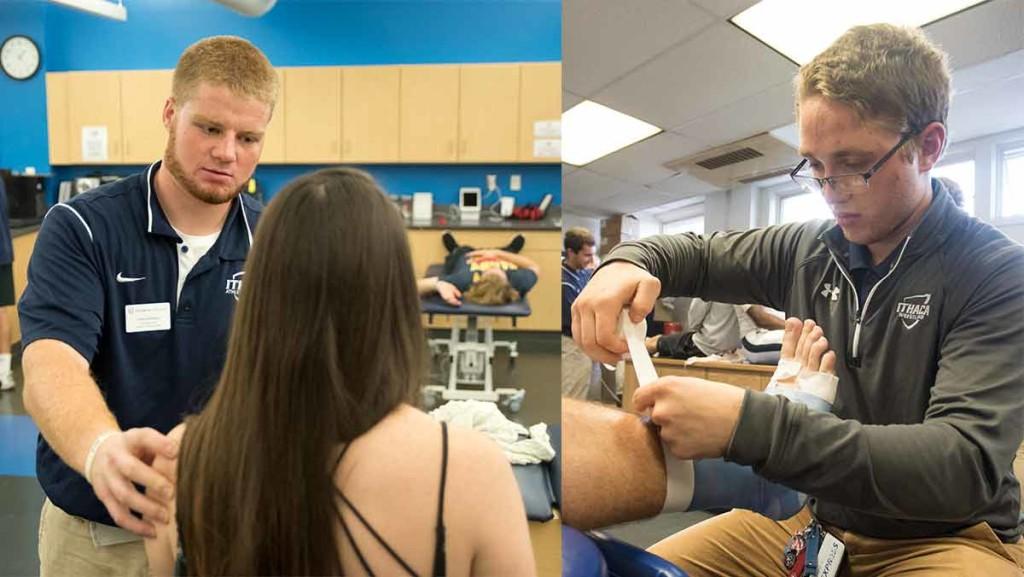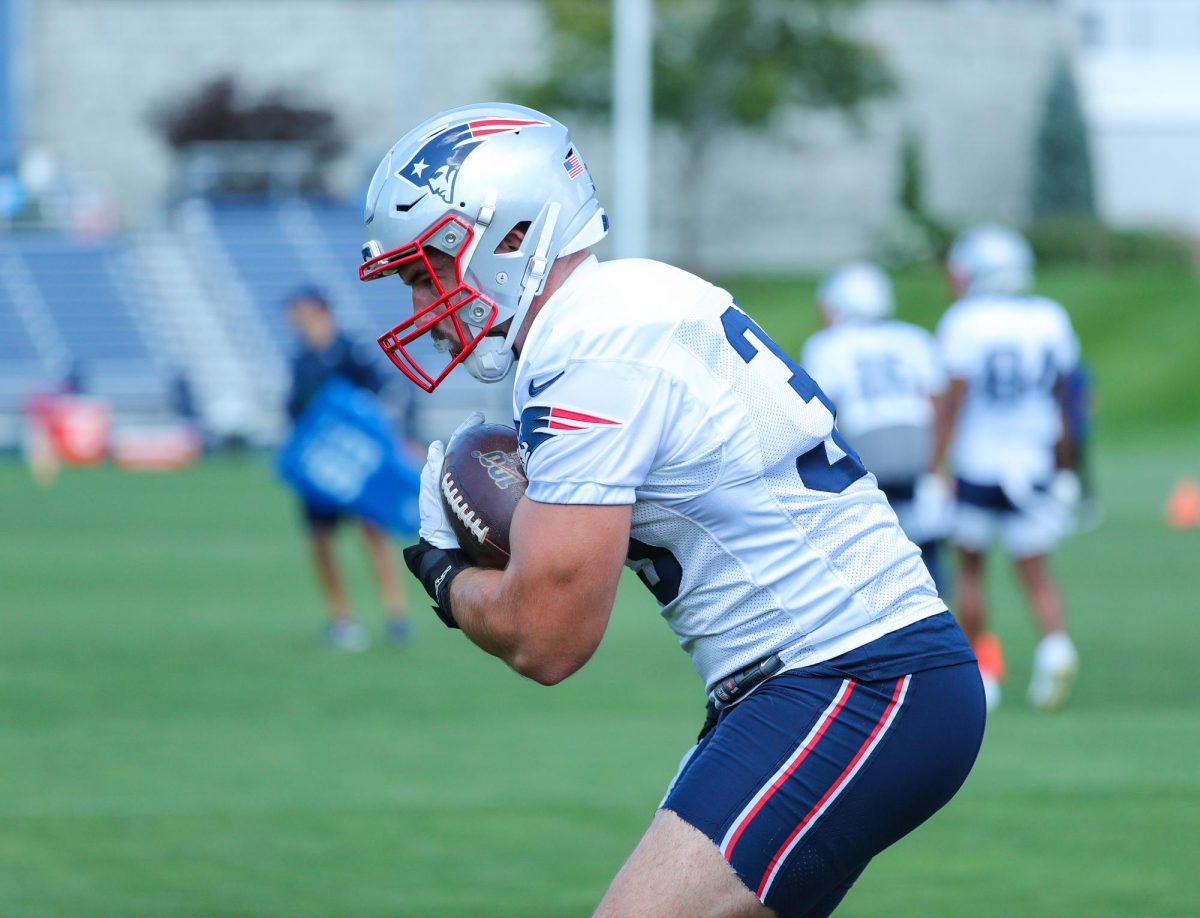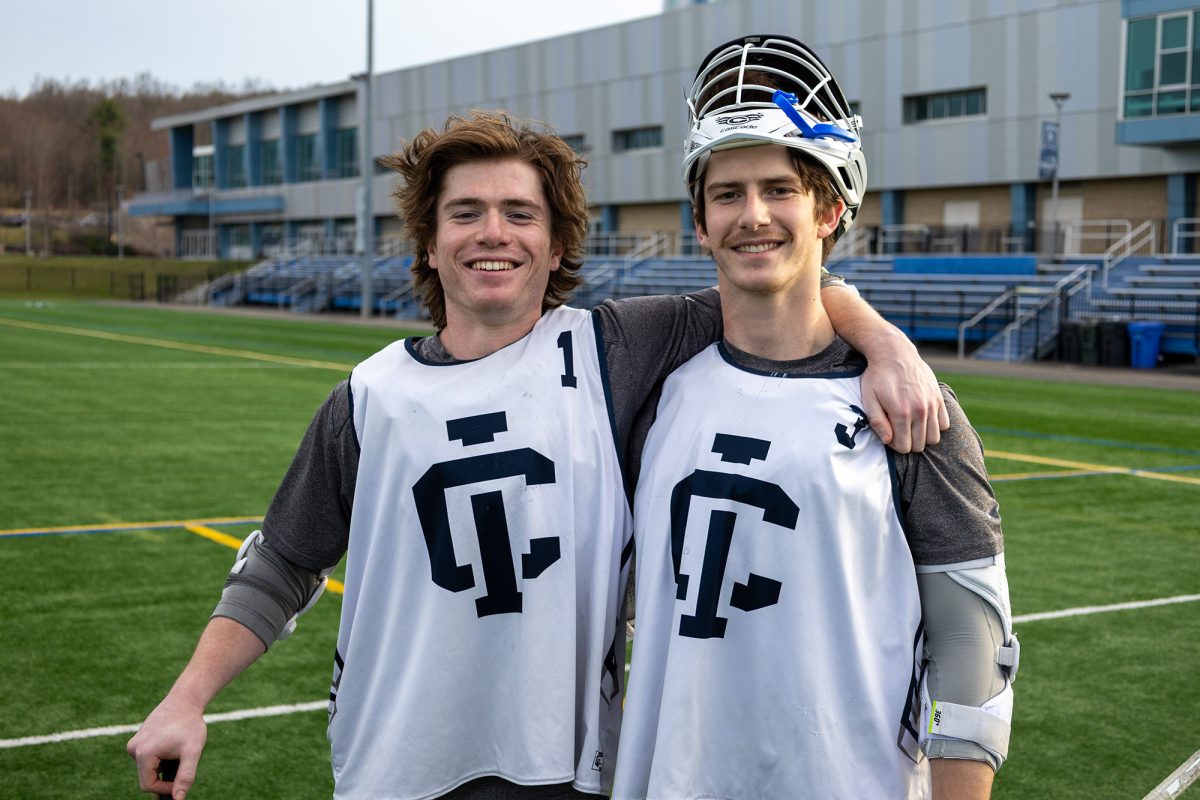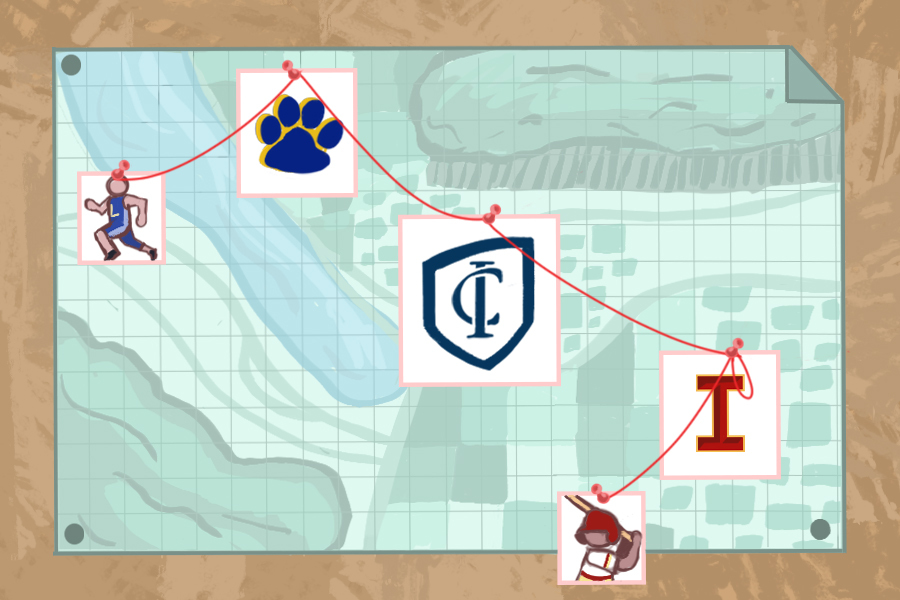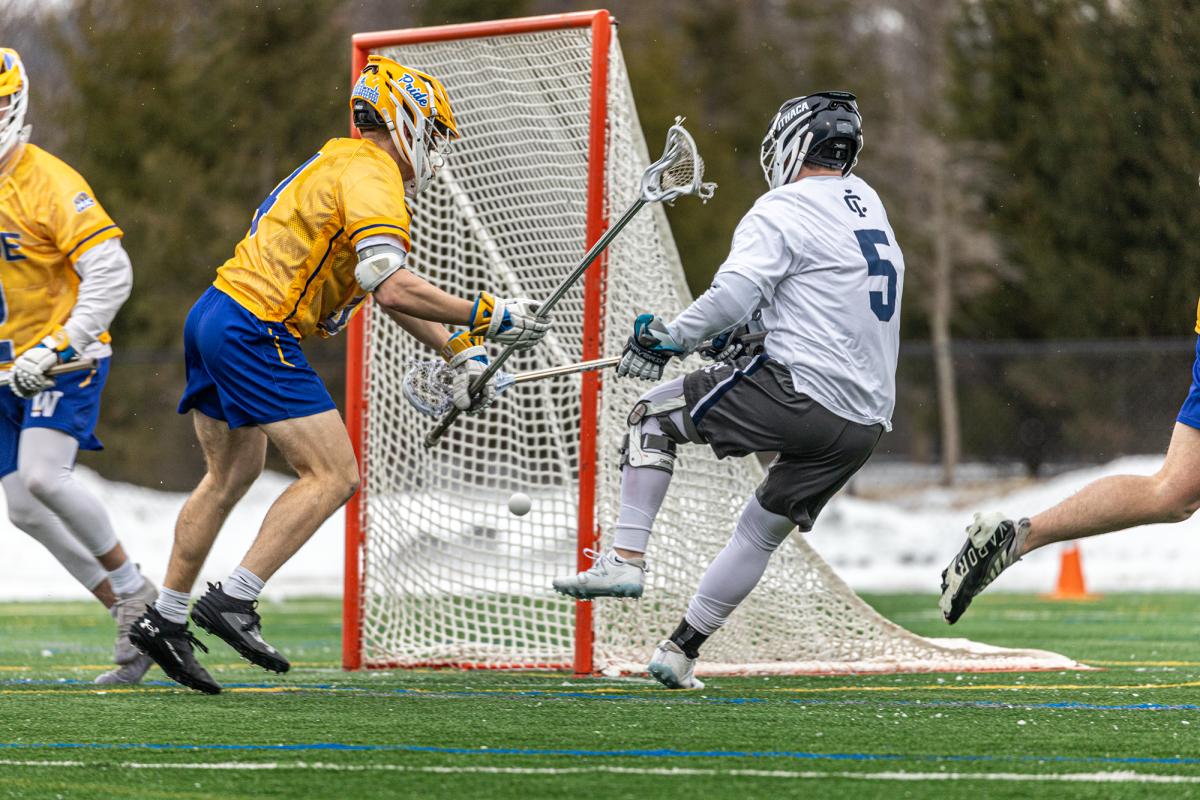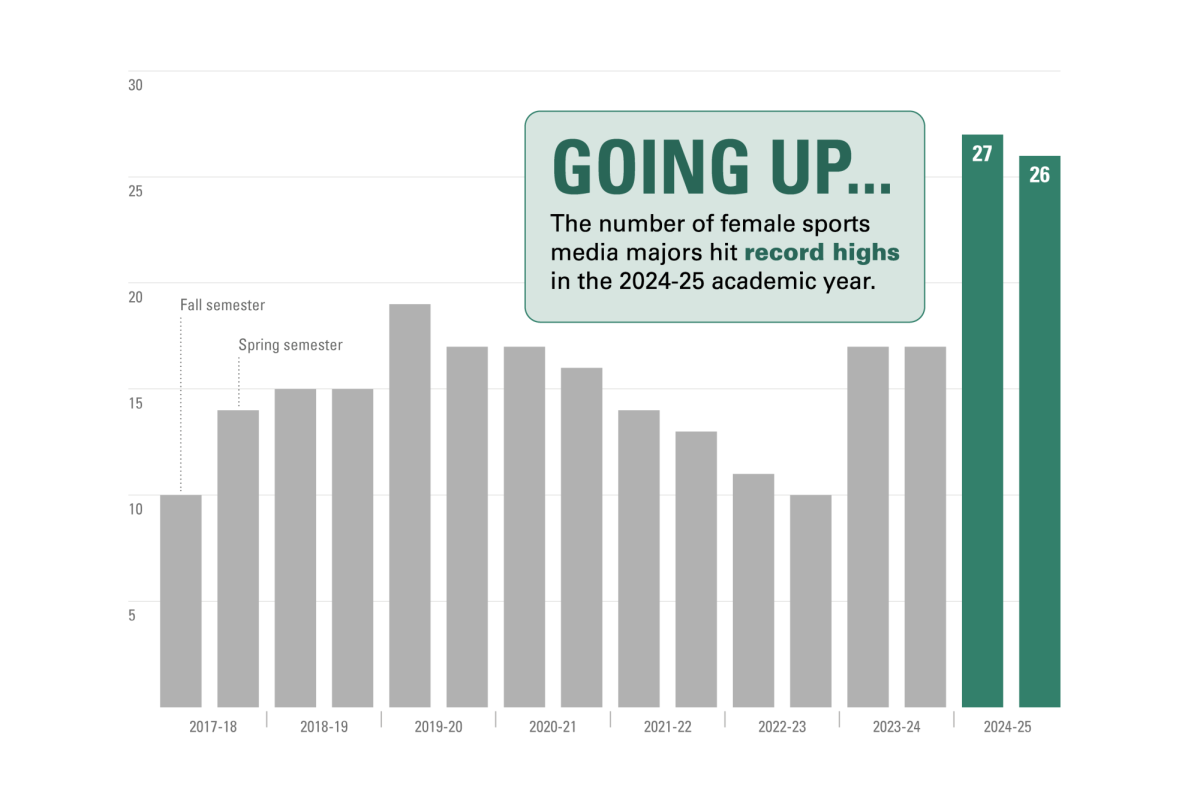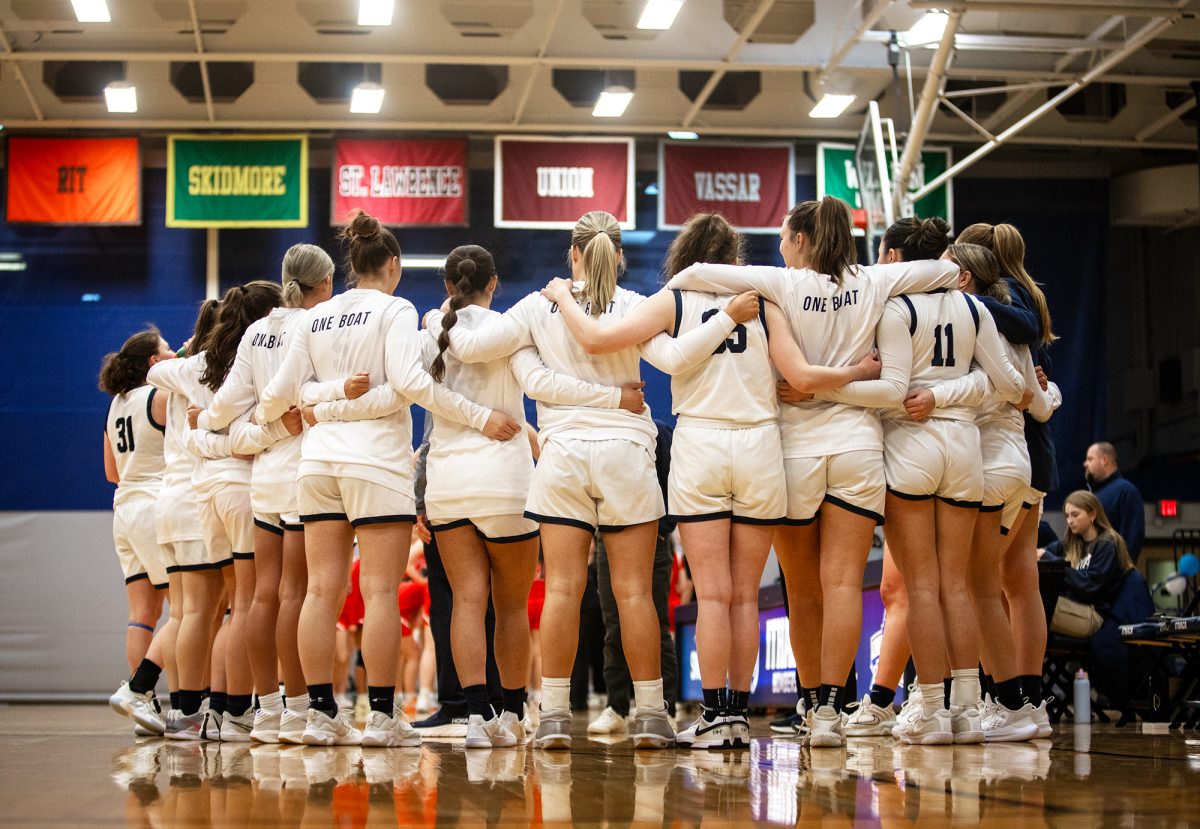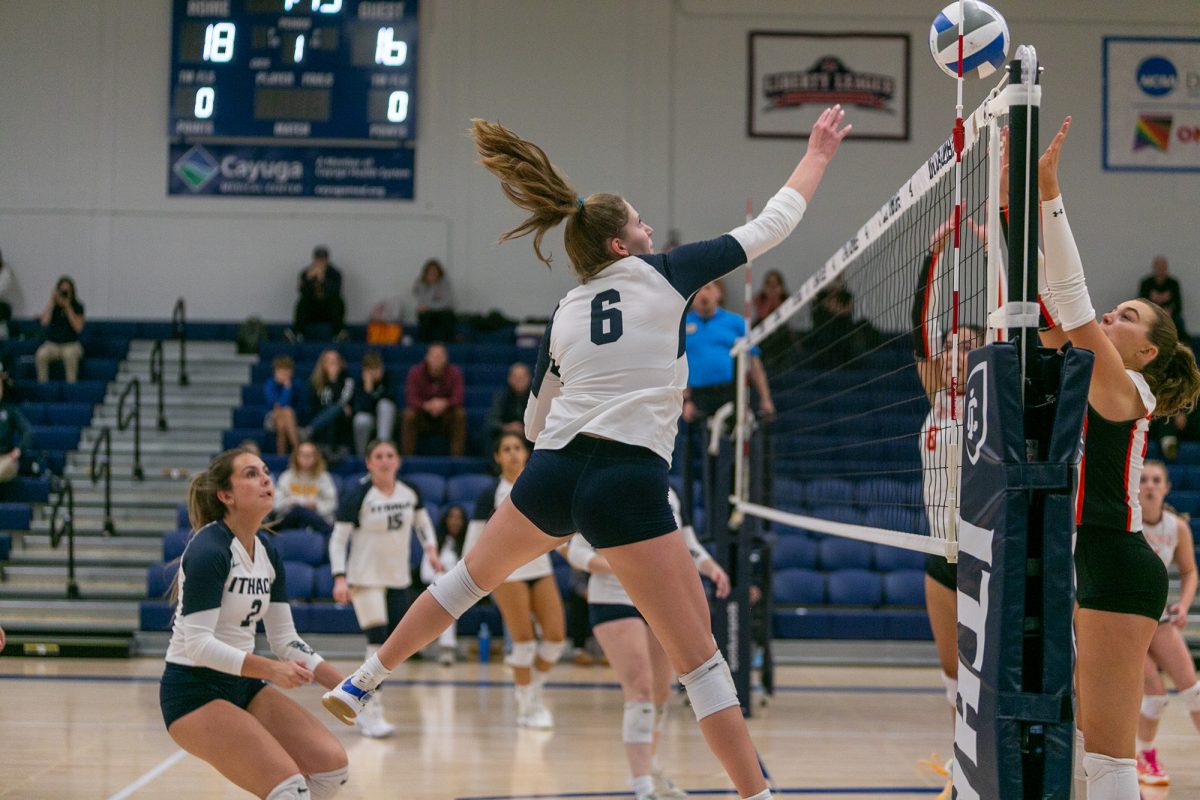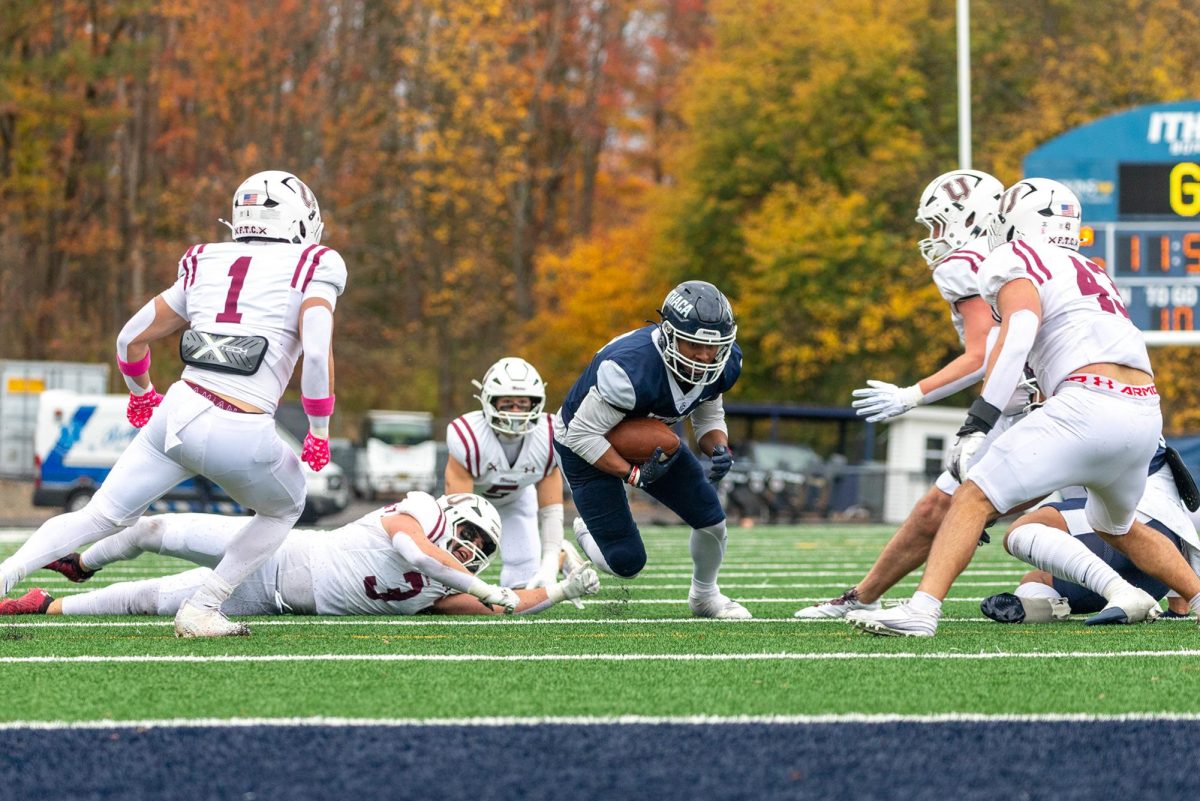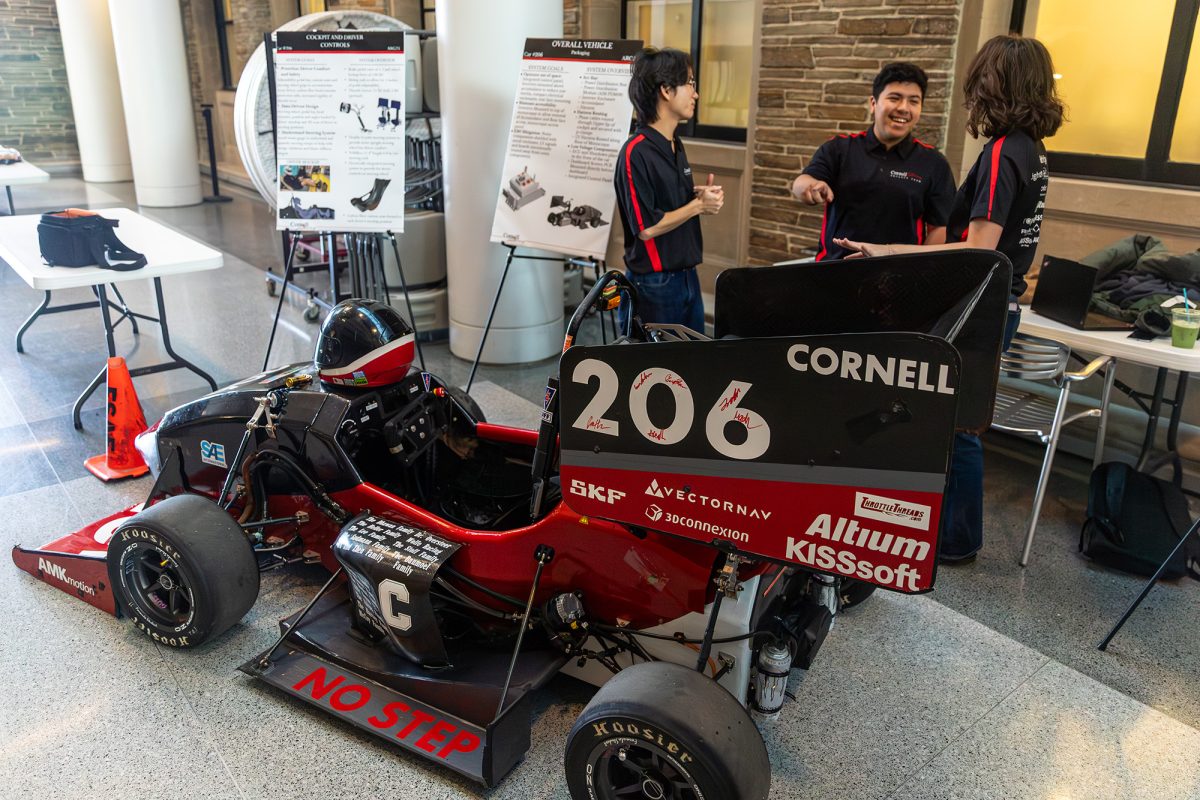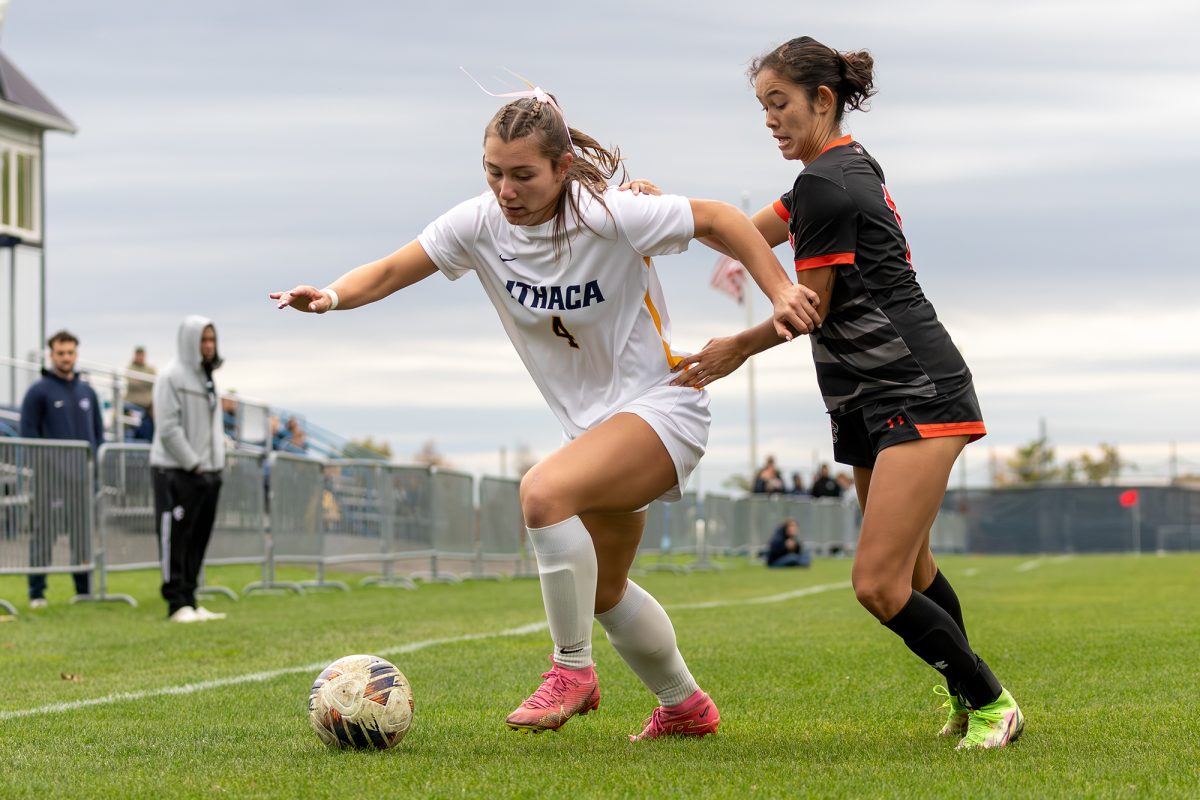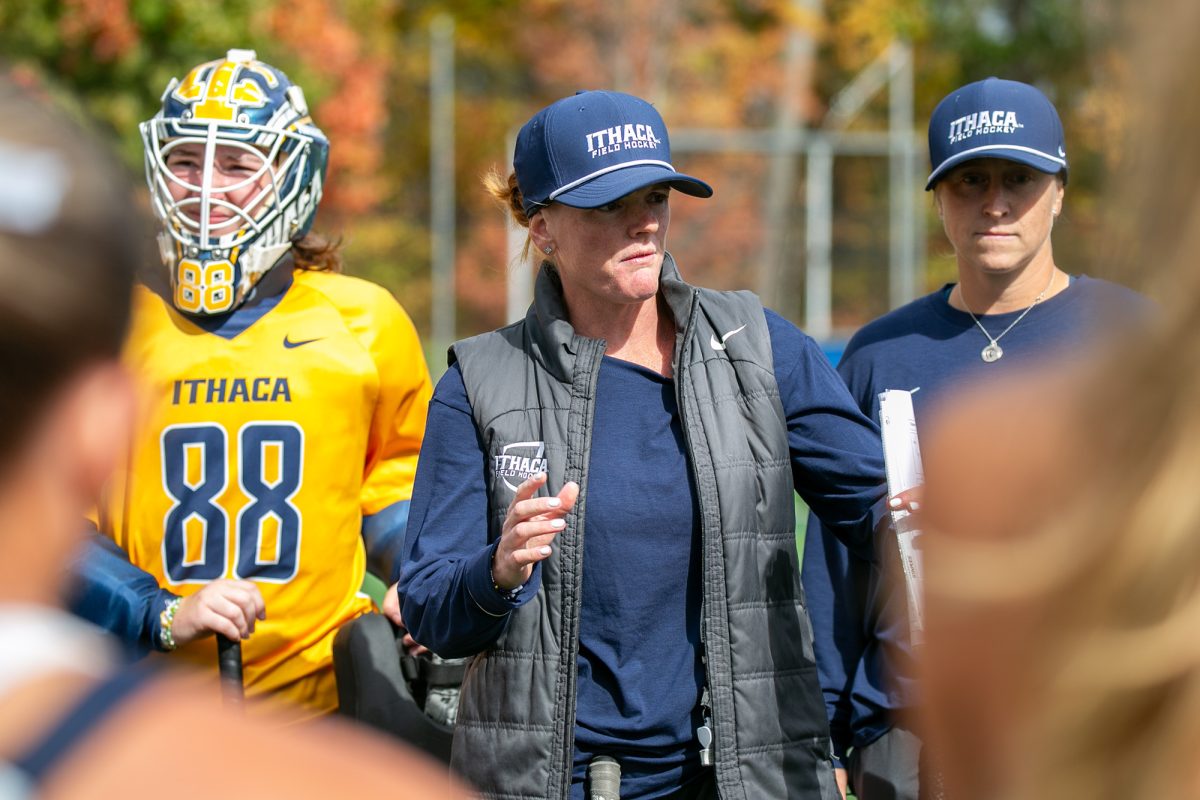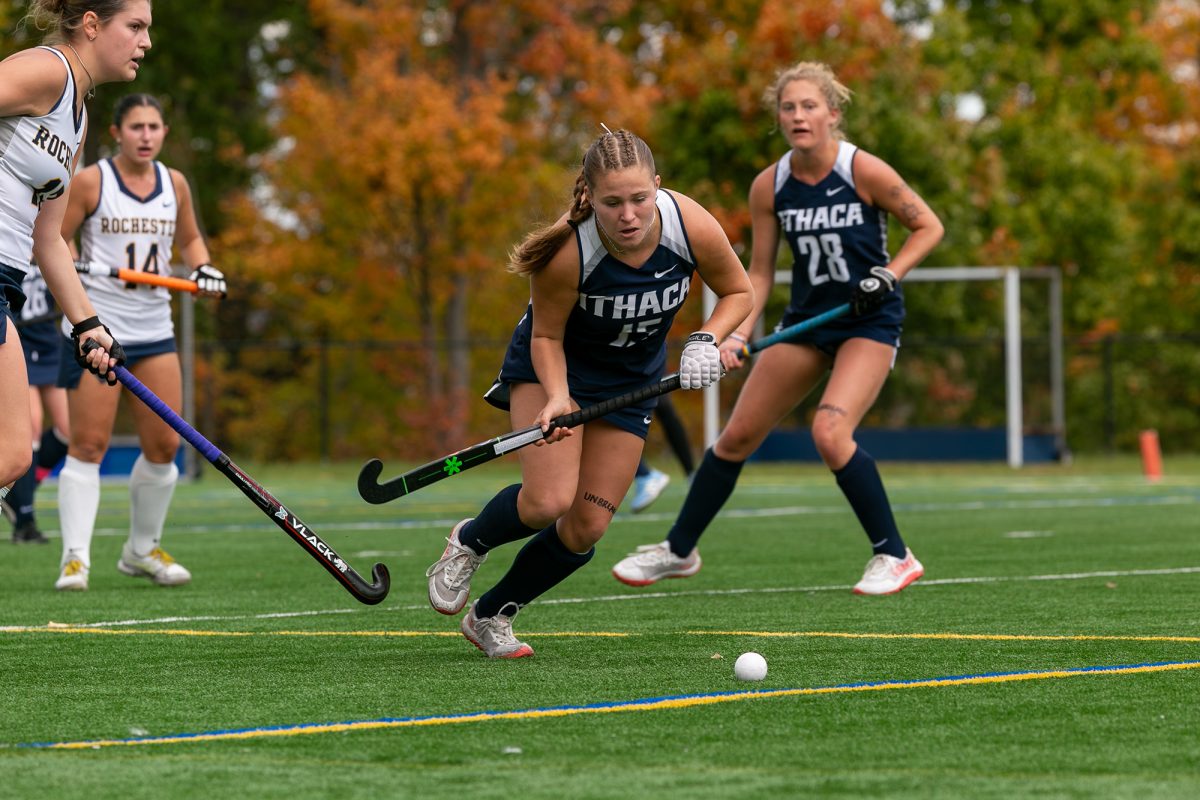One of the main priority of a student is balancing academics with extracurricular activities, but for some student-athletes, that can be a bit more difficult.
Athletic training is one of the most time-consuming bachelor’s degree programs at Ithaca College based on the students’ heavy workload. Participating in a varsity sport also requires an immense amount of time and dedication. Roughly 250 students out of approximately 7,000 undergraduates on campus embrace the challenge of doing both.
Because of the challenge, the college is part of a handful of athletic training programs in New York state to allow students to also participate in intercollegiate athletics. Four out of the 10 schools in New York state that have athletic training programs, including Alfred University, Marist College and Hofstra University, allow AT majors to play a varsity sport while in their program.
Majoring in athletic training at the college requires more than the hours spent in a classroom. In the second year of the major, students begin clinical education, which is only available on campus. Students work hands-on with one of the 25 intercollegiate sports teams in order to receive credit for their clinical education. Later, juniors and seniors are assigned to either on- or off-campus clinical rotations twice per year, and a minimum of 780 hours are required to graduate.
Athletic training majors who are also varsity athletes have to put in double the time and commitment. For intercollegiate athletes, practices are held every day during their season, while off-season practices depend on the team and coach.
Paul Geisler, program director and associate professor of athletic training, said participating in both the athletic training program and a varsity sport is a major commitment, and the students are informed of the challenge prior to enrollment.
“We are very proud of the hard work our students put in and that includes athletes who successfully complete both parts — the AT curriculum and their sport,” Geisler said.
Senior Carrine Putnam, an athletic training major who is also on the women’s crew team, had to give up crew for the fall season in order to focus on her major requirements.
“It’s challenging because all my teammates are practicing together, and I have to find time to work out with another teammate so that I won’t be behind for the spring season,” Putnam said.
This fall, Putnam is working with the women’s soccer team before transferring to the swimming and diving team in the winter season. Her responsibilities include attending all of the team’s practices, home games and treatments. In the spring, Putnam will be given several Hill Center clinic hours a week, and she will also be back in one of the boats of the women’s crew team.
Putnam said she has figured out how to balance both obligations despite how much they consume her time.
“The only things I try to avoid are classes after 3 because that’s when I either have to go to my sport assignment or have crew practice,” she said.
Truman State University, a Division II school in Kirksville, Missouri, with a similar athletic training program, does not permit its students to participate in the NCAA while in the program.
According to the Truman State website, it is not possible to meet the demands of both desirable priorities and instead encourages co-curricular activities.
Brandy Schneider, the athletic training program director at Truman State, said the reasoning for Truman State’s decision is that their clinic hours overlap varsity sports practice hours, as well as games.
Thomas Anania, a junior on the wrestling team, said he is fortunate Ithaca College allows students to participate in both the athletic training program and a varsity sport considering the fact that few AT programs allow participation in the NCAA as an AT major.
Anania said the real challenge comes in when his sport is out of season, as he struggles to find a balance between his offseason training for the football team and his increased academic load.
“As a collegiate athlete, we’re able to participate during our traditional sports season. But when not in season, you’re expected to be doing all your AT duties like going to practice and working in the clinic,” Anania said. “So the only real conflict is with preseason and offseason, which, depending on the sport, you may not be able to go to all of your preseason and off-season workouts.”
Junior football player Christopher Durr is also an aspiring athletic trainer. He will begin his training with the swimming and diving team in the winter season after the Bomber’s football season concludes. Despite the long days between both programs, Durr said he has managed his time accordingly and does not think tackling both programs at once is extremely difficult.
“I stay on top of my work and schedule everything out so I know when work has to be done by and what tasks I need to get done,” Durr said. “The one thing that might be difficult is making sure I get the required hours for the major during the fall semester when I am in season because I do not work with a sport like fellow students.”
Instead, Durr finds himself spending extra time in the clinic while in season and willingly works other events when he has the day off.
Durr decided to come to the college primarily for the athletic training program, and it was only after he arrived that he decided to join the football team.
He currently works one hour in the Hill Center Clinic and two hours in the Hammond Health Center in order to meet his clinical education requirement. When his football season is over, Durr will be working with the swimming and diving teams until the men’s lacrosse team starts its preseason.
Durr said the college has provided a great Division III atmosphere for both the athletes and non-athletes.
“It is just a great place to play at and for,” he said. “It’s just an awesome experience to have everyone from all the different sports support you and say ‘We have got your back.’”
Durr said Geisler and other leaders in the program also are a huge support system for varsity athletes in the major.
“[They] do a great job of making sure that although I play on a team, my overall experiences and learning as an AT major does not drop or differ than that of a fellow non-athlete peer,” Durr said.


